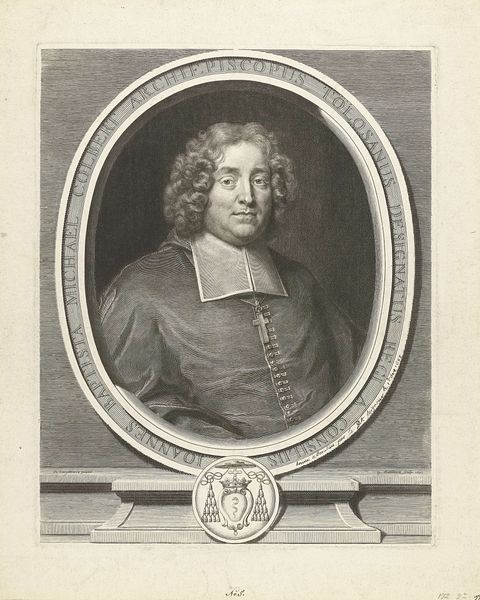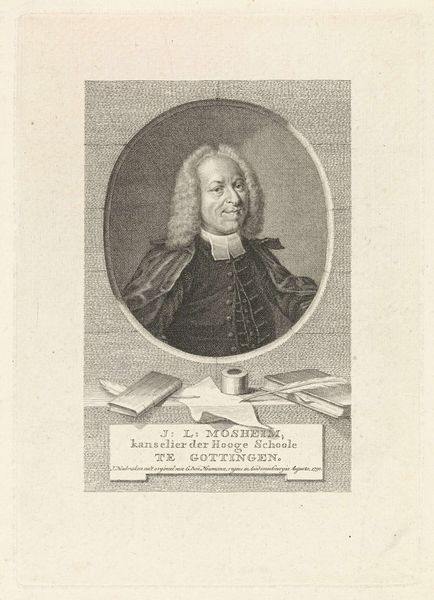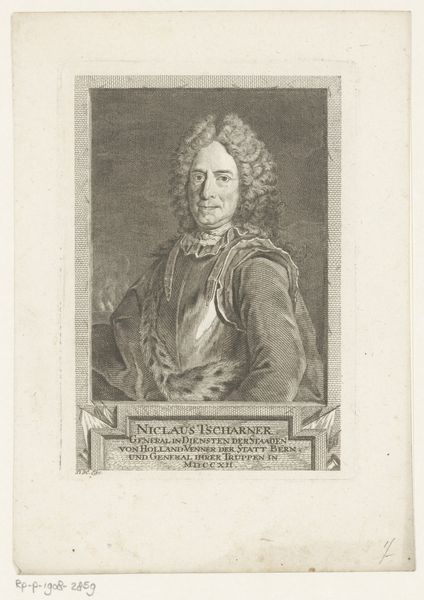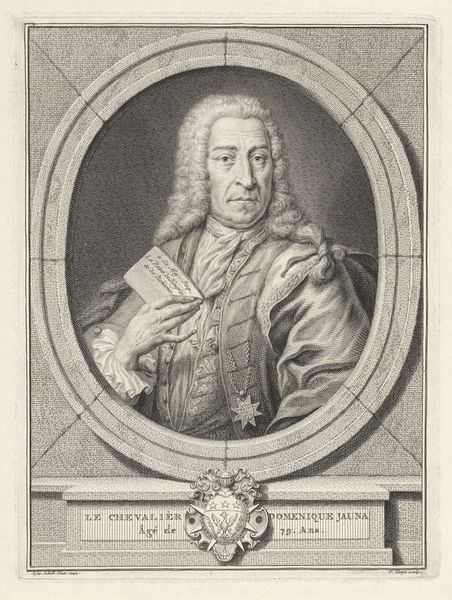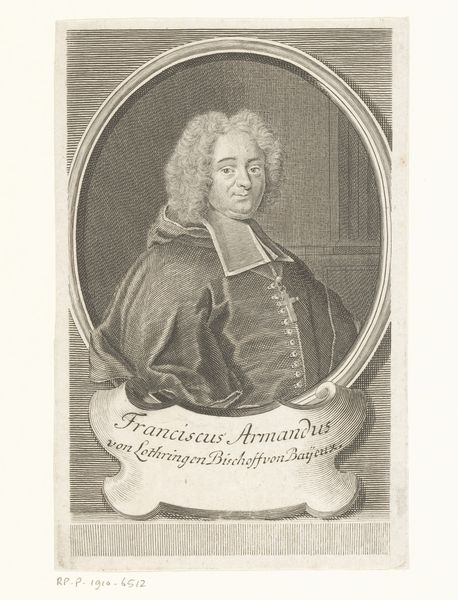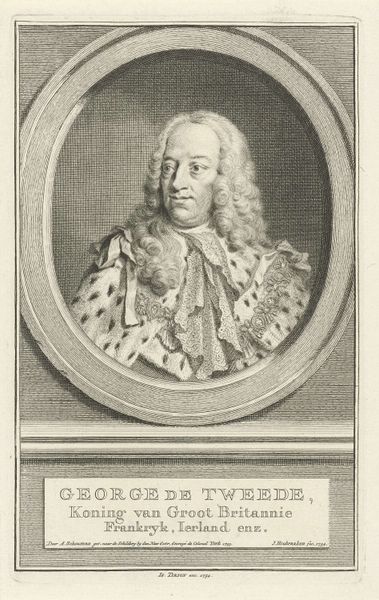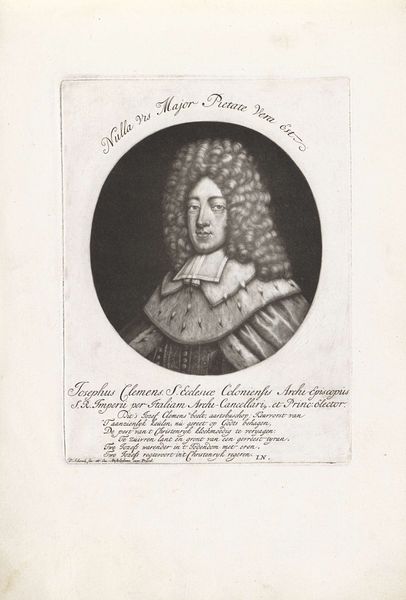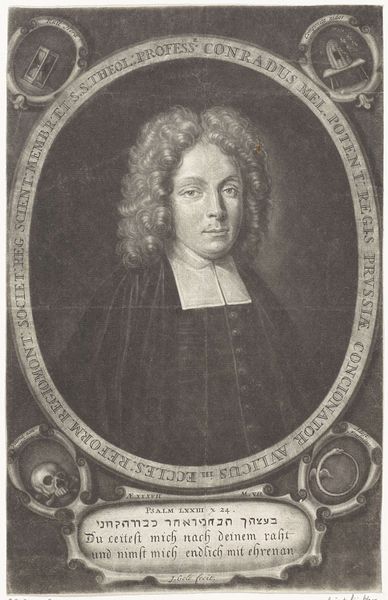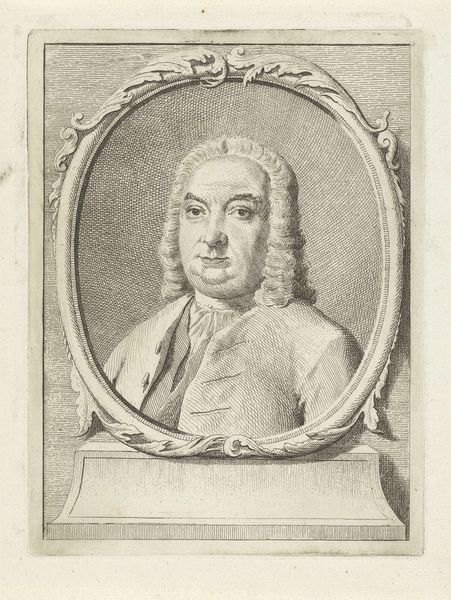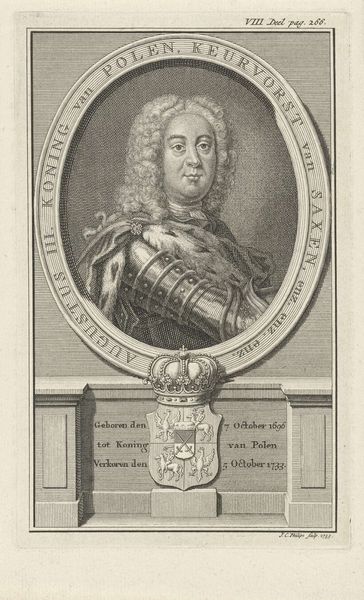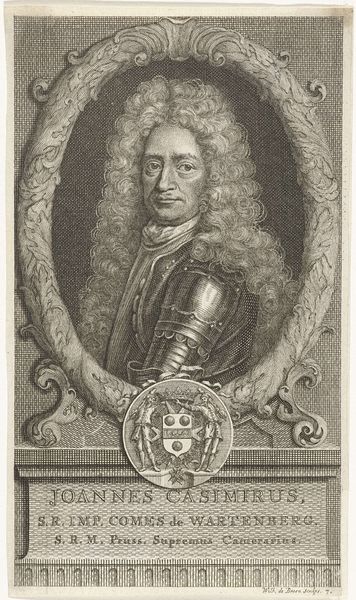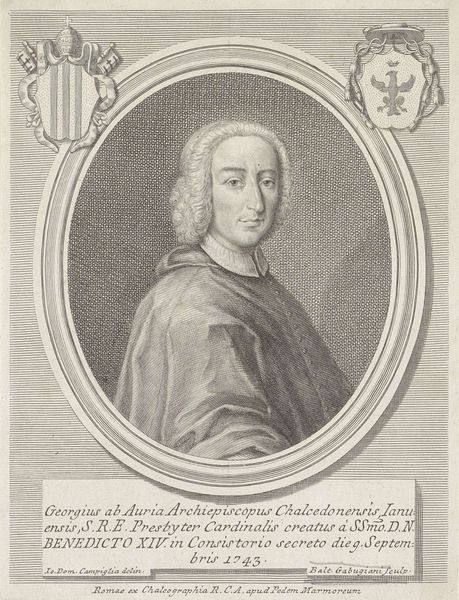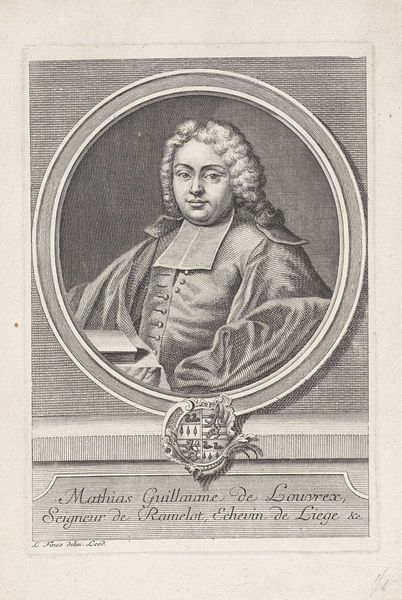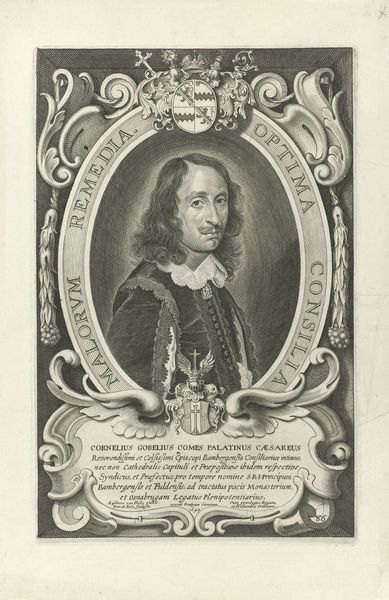
Portret van Anselm Franz von Ingelheim, aartsbisschop van Mainz 1670 - 1713
0:00
0:00
print, engraving
#
portrait
#
baroque
# print
#
old engraving style
#
engraving
Dimensions: height 186 mm, width 138 mm
Copyright: Rijks Museum: Open Domain
Curator: So, here we have a print, made sometime between 1670 and 1713, by Pieter Schenk. It's a portrait of Anselm Franz von Ingelheim, who was the Archbishop of Mainz. What strikes you first about it? Editor: Immediately, I’m drawn to the incredible stillness, despite the flurry of texture. All that exquisitely rendered fur, the looping wig... and yet, the Archbishop's face projects such a calm, almost unsettling serenity. Is it just me, or is there a hint of melancholic resignation in those eyes? Curator: That's a keen observation. The Baroque era, in which this was made, loved dramatic contrasts, and it often presented people as both powerful figures and vulnerable individuals, particularly when religious identity became so politicized. Anselm held a powerful position and he was also right in the middle of it all. This portrait captures that tension quite well. Editor: The text at the bottom too seems significant, almost like propaganda. "The Electoral menaces" – it's clearly positioning Anselm as a savior, freeing Mainz from oppression. Was that a common theme in portraiture back then, injecting them directly into the political landscape? Curator: Absolutely. This engraving, made in Amsterdam, became a powerful way to distribute specific messages. These weren't just images of individuals; they were crafted to convey power, lineage, and political allegiances in a world that relied heavily on visual cues. Pieter Schenk, the engraver, likely understood the gravity of these portraits in the distribution of that power. Editor: The fact that it is a print is so interesting; how widely distributed could something like this be and where might it have been displayed? Curator: That is what is so appealing and potentially dangerous in this case; printed portraits allowed for images of people to go to even relatively far reaching places. They could be included in books or prints can be bought for people’s personal collection for them to display. With something this politically charged you have to imagine that having a favorable, and widely spread portrait would be an excellent goal. Editor: Seeing the intricacies of the piece, it offers a compelling view into both individual character and broader socio-political dynamics. Thank you for contextualizing the importance of this work within its historical landscape, shedding light on what makes this object an exceptional moment in visual history.
Comments
No comments
Be the first to comment and join the conversation on the ultimate creative platform.
